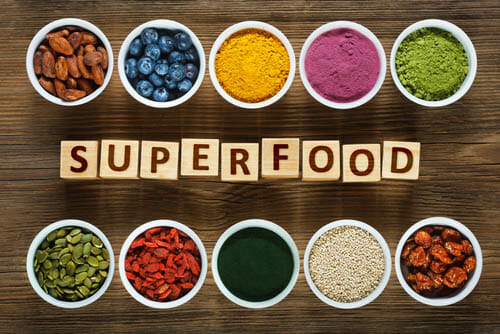
Superfoods offer countless health benefits — but if you don’t go easy on portions, you’ll pack on the kilos.
Nice going: you’ve sworn off processed and fast foods and are now a card-carrying member of the superfoods fan club, stocking up on enough health-boosting, illness-thwarting edibles to make a nutritionist weep sugar-free tears of joy. But even super-healthy foods can have less-than-super downsides. We’re talking calories: shovel quinoa down your throat or stuff your cheeks with walnuts and it’s your arse that’ll pay the price. So go the “ration-al” route instead by sticking to these guidelines.
Avocado
Calories: 300 per 1 whole
Suggested daily limit: ½ avocado
Eating half an avocado at lunch can keep you feeling full for hours afterward, a study in Nutrition Journal found, which – on top of lowering heart disease risk and improving cholesterol levels – is one more reason to pick this fruit. Don’t overdo it, though. Think of the avocado as the “fat” cat of superfoods – each has 29 grams! Sure, it’s healthy monounsaturated fat, but too much could still split the seams of your jeans.
Bean-based pasta
Calories: 200 per ¾ cup
Suggested daily limit: ¾ cup
Pastas made with bean, lentil or pea flour are gluten-free, and have more fibre and protein than regular, grain-based pasta. They’re also rich in nutrients like folate and thiamine – both essential for revving the metabolism and turning food into energy. Just be sure your pasta’s 100% grain-free, not the same old flour noodles gussied up with just a smidgen of bean – those alternatives are usually higher in calories, fat and sodium.

Quinoa
Calories: 222 per cup
Suggested daily limit: ½ cup
Unlike true grains, quinoa has more antioxidants, more protein (including all nine essential amino acids) and fewer carbs. But here’s the rub: quinoa is also higher in calories than pasta or rice, so it can be easy to overindulge. Try mixing in plenty of antioxidant-rich vegetables, like kale and cauliflower, to max the portion size but minimise calories.

Walnuts
Calories: 190 per 30g
Suggested daily limit: 1 handful (14 halves)
Eating walnuts is such a good way to get omega-3 fatty acids – which promote heart health and maybe even weight loss – they’re a fave of government health authorities. Being 15% protein and 65% fat, however, they also pack massive calories, so proceed with caution. A handful seems to be the sweet spot. That amount, according to recent research, may help lower blood pressure, cholesterol and inflammation.

Dark chocolate
Calories: 170 per 30g
Suggested daily limit: 30-60g
Lower in sugar than milk chocolate (or almost any other confectionary), dark chocolate – with at least 70% cacao – is full of antioxidant and anti-inflammatory flavonoids. Still, even the darkest chocolate isn’t calorie-free, so have a couple of squares, then wrap that bad boy up.

Nut butters
Calories: 90 per tablespoon
Suggested daily limit: 2 tablespoons
The good news: nut butters are versatile and full of healthy fats, vitamins, minerals, flavonoids and plant-based protein. The not-quite-as-good news: just two tablespoons will run you about 200 calories – and, who ever stops at two tablespoons? To keep temptation at bay, buy your favourite nut butter in smaller jars.

Dried fruit
Calories: 100 per 30g
Suggested daily limit: 30-60g
Dried fruit packs more antioxidants than fresh, plus tons of nutrients (vitamin E, potassium, magnesium). But the dehydration process also crams all the fruits’ sugar into little diet-killing calorie bombs; so mix them into salads or trail mix, but resist the urge to eat them straight from the bag.

Olive oil
Calories: 120 per tablespoon
Suggested daily limit: 1-2 tablespoons
This oil, a monounsaturated fat – the good kind – has been found to help lower risk of heart disease and high cholesterol. It’s also full of antioxidants called polyphenols, which battle cell-damaging free radicals and help tamp down inflammation. One downside: like all oils, olive is basically just fat, making it super-high in calories. So have a light hand when you pour.
Related: FAT Loss: Lose the last 5 kilograms





